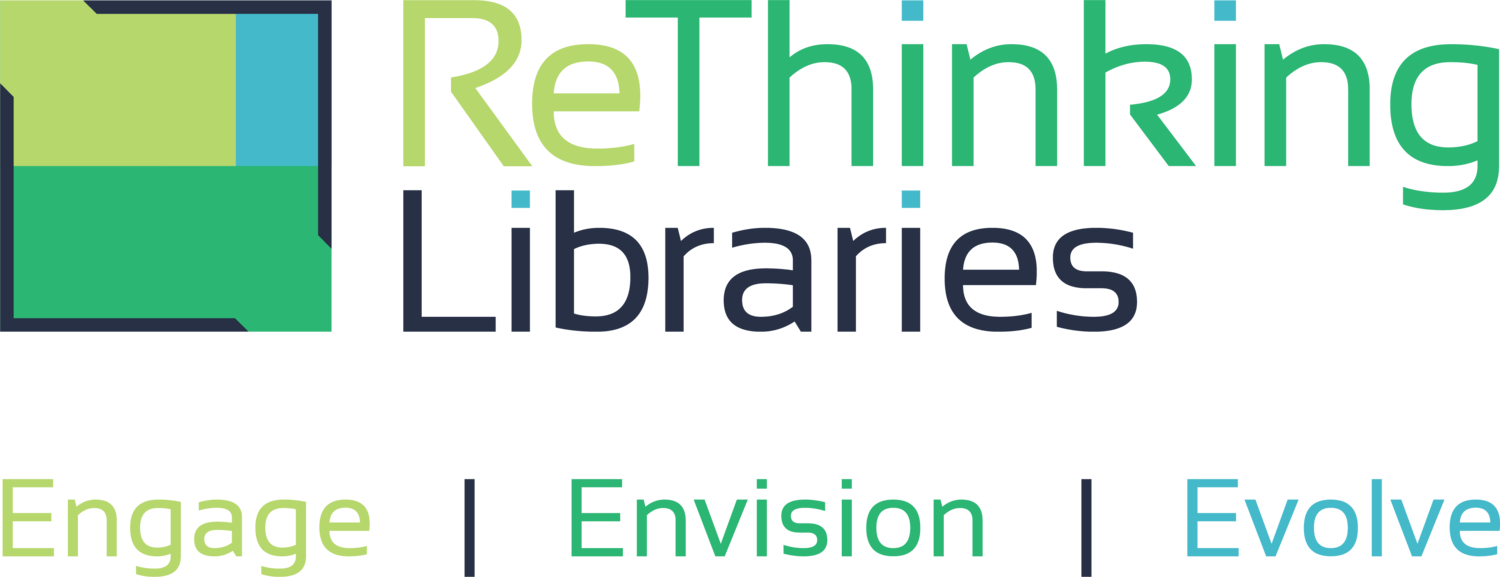Recognizing and Addressing Needs
Novi (MI) Public Library (NPL) is in a city of about 65,000 people. Located 25 minutes outside of Detroit, this northwestern suburban library has a main library and a lending kiosk on the north side of town. The Library and its staff are well-loved by the community for their wide range of services and programs. But continually responding to community needs without additional funding was creating issues for staff morale and sustainability.
Planning Process
Beginning in November 2022, NPL embarked on a strategic planning process with ReThinking Libraries (RTL). Based on surveys and focus groups with residents, RTL found that the public wanted adequate quiet study spaces and appropriate spaces for children and teens. The safety of the parking area was also a major concern. Numerous comments were made in the surveys and focus groups about the collections, such as ensuring a focus on the books and other physical materials, as well as being sure to keep up with e-materials. There were also suggestions regarding the addition of non-traditional materials.
The culmination of the planning process was a two-day retreat. Library Director Julie Farkas noted that she was thrilled with the number of community members who wanted to participate. The selected group of 30 people reviewed NPL’s mission, vision, and values, and drafted the pillars of the plan, which were later approved by the board:
Align Funding and Services
Improve Internal Communications
Adapt Resources, Services, and Facilities
Staff Investment and Retention
Putting the Plan Into Action: Big Steps and Small
Since the adoption of the plan, the staff have been hard at work on implementation. First, they addressed some low-hanging fruit, such as improving holiday, sick, and vacation time policies for staff. Staff teams have begun working on a new marketing plan, technology plan, and customer service plan.
More importantly, says Farkas, the plan paved the way for some important discussions with the board. Findings showed that the staff were overtaxed and feeling run down. “We needed to decide: were we going to pare down services and work within the budget we currently have, or were we going to start talking to stakeholders, the city council, and community members about increased funding?” The library board has committed to asking for more funding, which would also allow NPL to renovate the 20-year-old building, replace carpeting, update furniture, and renovate the youth area.
Now the staff is focused on the comprehensive work plan developed for 2024-2025. It includes such action steps as:
Commit to a ballot initiative for additional funding
Increase community awareness of the Strategic Plan and funding gap
Continue to develop departmental manuals and employee training
Implement collection changes supported by community feedback
Form an employee wellbeing committee
Continue to evaluate HR policies for improvements, culminating in a new HR manual
Farkas notes that the staff is energized about seeing real change happening, and being involved in designing those changes. They are thinking about their spaces, services, and collections in new ways. They appreciate knowing that they are working toward progress in a positive way.
Moving Forward
Farkas credits the strategic planning process with creating trust among all parties. Using outside consultants brought a fresh perspective to the discussions. They brought in valuable data and asked hard questions, helping everyone see the building and services with new eyes.
Looking ahead, Farkas is excited about the next steps. “There is a level of excitement around the future. The board is on par with the community and interested in new staff ideas.”
Farkas also points to a change in staff attitude: “Because we were saying yes to a lot of new services, the staff were stretched thin. They thought this plan was going to be more work for them, and they felt they didn’t have capacity. Now, staff feel recognized and heard. I appreciate the staff for being honest about their needs. It’s clear they want to improve our library culture and build trust. We are now a healthier staff.”



